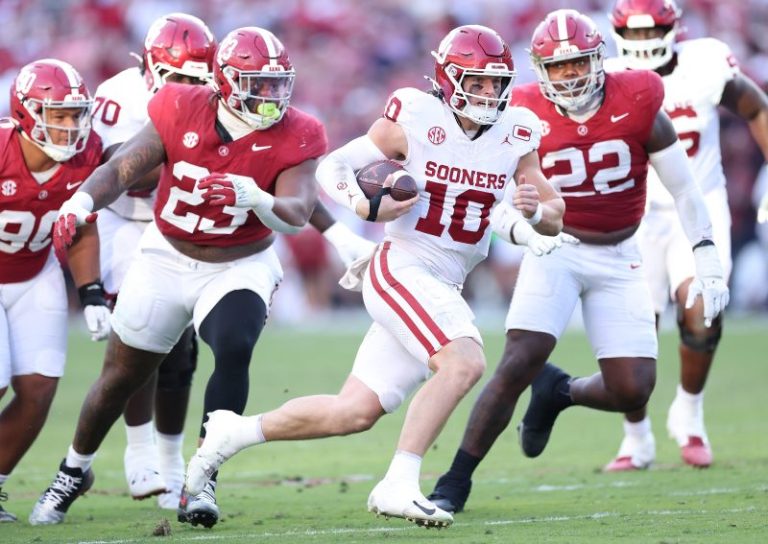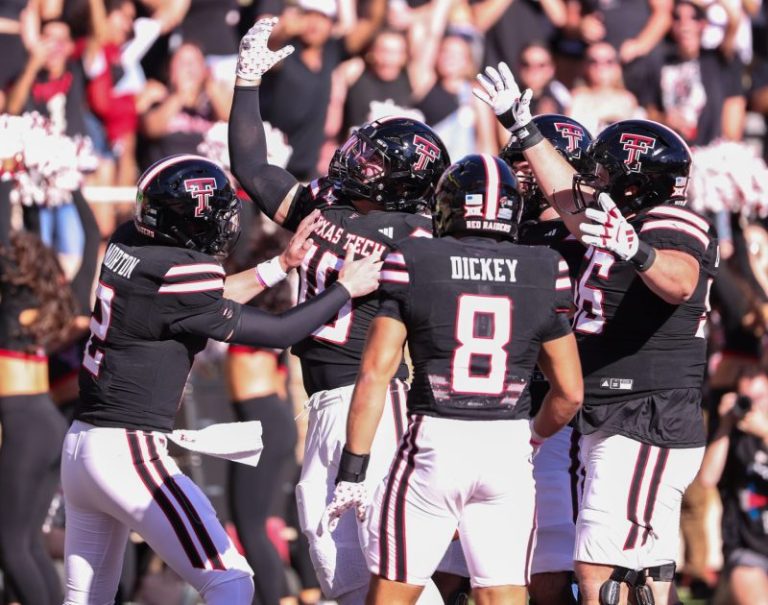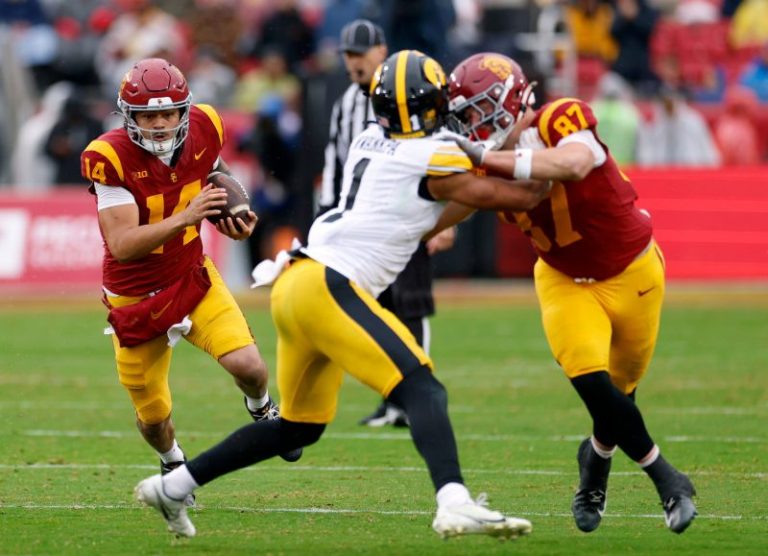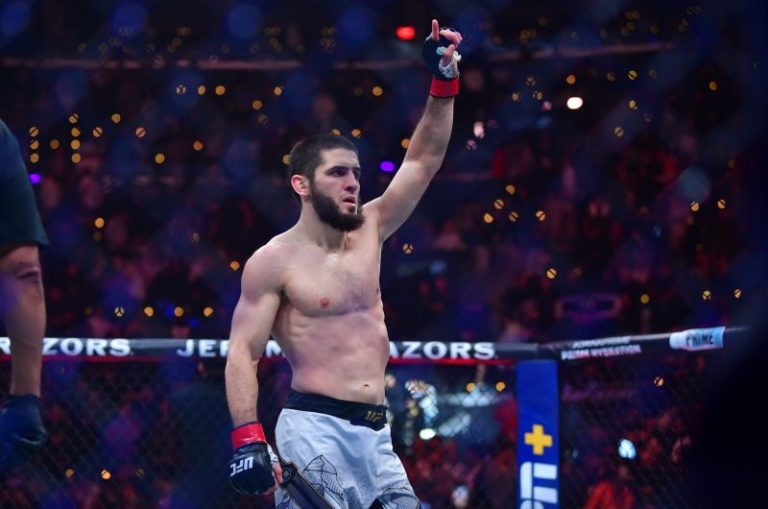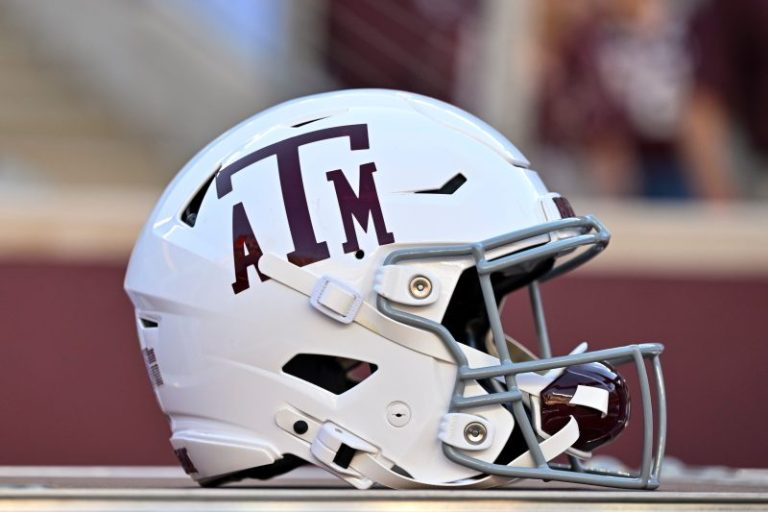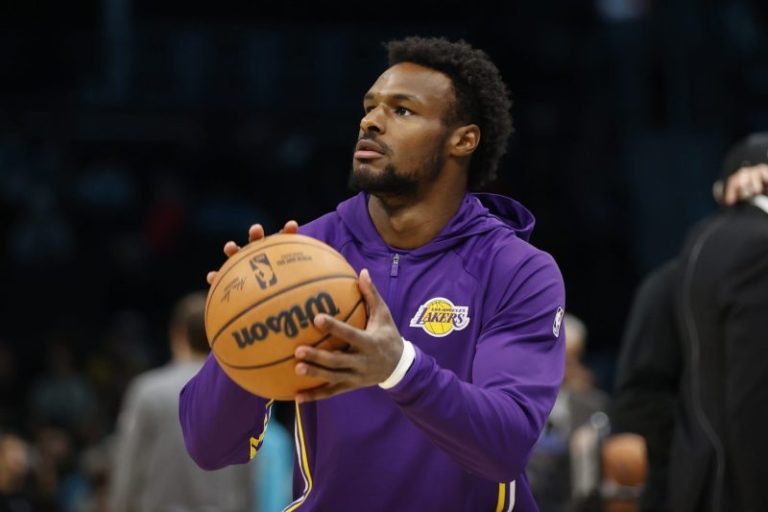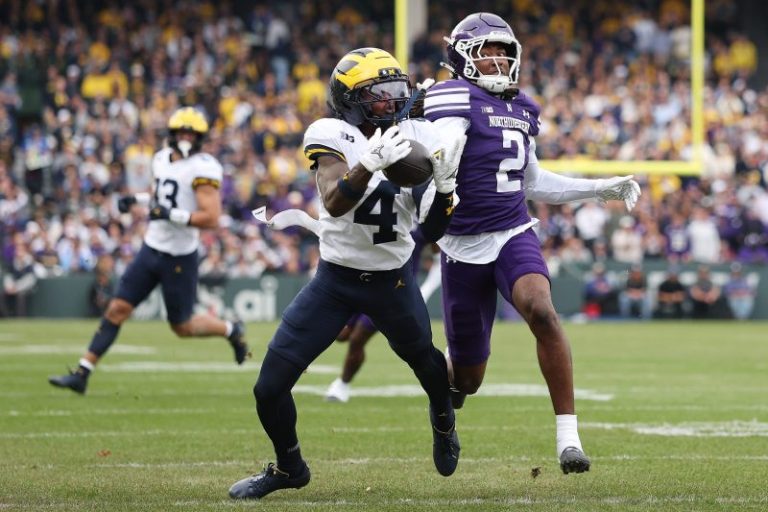Jack Della Maddalena, UFC’s welterweight champion, will make his first title defense against a man expected to take the title away.
Islam Makhachev has moved up to the 170-pound division in search of a second division championship after vacating his title at the 155-pound lightweight division.
It’s no surprise Makhachev is the betting favorite, considering he’s won 15 matches in a row, a streak dating back to 2016. With another victory, Makhachev would break Anderson Silva’s record for longest winning streak in UFC history.
But it doesn’t figure to be easy in a matchup between the elite striker (Maddalena) and the world-class grappler (Makhachev).
Maddalena is coming off an impressive victory over Belal Muhammad, another terrific grappler. After takedowns, Maddalena has shown the ability to get back on his feet quickly. But now he faces arguably the best pound-for-pound UFC fighter.
“He’s a good boxer, he’s a good fighter,’’ Makhachev said this week. “But I know I have better skills.’’
USA TODAY Sports has everything you need to enjoy UFC 322, including updates, highlights and analysis:
UFC 322: Time, PPV, streaming for Makhachev vs Della Maddalena
The highly anticipated fight between Islam Makhachev and Jack Della Maddalena will take place on Saturday, Nov. 15 and can be purchased on ESPN+ PPV.
Date: Saturday, Nov. 15
Location: Madison Square Garden (New York)
Early Prelims start time: 6 p.m. ET
Early Prelims card TV: FX; Prelims stream: ESPN+, Disney+
Prelims card start time: 8 p.m. ET
Prelims card TV: ESPNEWS/FX; Prelims stream: ESPN+, Disney+
Main card start time: 10 p.m. ET
Main card stream: ESPN+ PPV
Catch UFC action with an ESPN+ subscription
Ethyn Ewing def. Malcolm Wellmaker by unanimous decision
Ewing took the fight on 48 hours notice after Cody Haddon withdrew with an injury and he looked like he’d been preparing for weeks. In his UFC debut, Ewing subdued the previously undefeated Malcolm Wellmaker with punches, kicks and a couple timely takedowns in their featherweight fight.
The judges scored it 30-27, 29-28 and 29-28 for the poised Ewing of Yorba Linda, California.
‘You know what they say, the sword is deadliest in calm hands,’ Ewing said.
In the first round, 5-foot-10 Wellmaker staggered the 5-6 Ewing with a hard right. But he failed to capitalize on the moment or on his height advantage, as Ewing fought back with his fists.
Wellmaker scored, but many of his punches were off the mark. Ewing, however, scored with more accuracy and power.
Ewing improved to 9-1 (1-0 UFC) and Wellmaker fell to 10-1 (2-1 UFC).
UFC 322 fight results: Early prelims
Kyle Daukaus def. Gerald Meerschaert (1st round — submission/D’arce choke), middleweight
Pat Sabatini def. Chepe Mariscal (unanimous decision): Featherweight
Fatima Kline def. Angela Hill(unanimous decision): Women’s Strawweight
Baisangur Susurkaev def. Eric McConico (Round 3 – KO): Middleweight
Matheus Camilo def. Viacheslav Borshchev (unanimous decision): Lightweight
UFC 322: Della Maddalena vs. Makhachev predictions
BetMGM: Islam Makhachev
Anatoly Pimentel writes: ‘A submission victory for Makhachev over Della Maddalena is my prediction for this fight because his wrestling skills are far superior and currently unstoppable. Furthermore, he won’t be stressing about weight cutting since he’ll move up in the welterweight division.
There’s no doubt that Della Maddalena has improved a lot in his grappling skills. With the help of Craig Jones and Alexander Volkanovski in his camp, he’ll still be able to improve them even more, but Makhachev’s wrestling and grappling are on another level.’
UFC.com: Islam Makhachev
Tim Finnegan of DraftKings writes: ‘Ultimately, Makhachev’s offensive grappling will probably be too much for Della Maddalena to handle, even with Craig Jones in his corner. Della Maddalena has been taken down 10 times in his last two fights by fighters who have inferior wrestling to Makhachev. Look for Makhachev to get this fight to the ground and cover the -5.5 point spread with a finish or a comfortable decision win.’
MMA Mania: Della Maddalena
Tim Bissell writes: ‘Della Maddalena lands 6.84 significant strikes a minute with 52% accuracy. That’s a ton of volume. More impressively, though, he has 64% defense against sig. strikes. This means he isn’t taking one to land one, like lots of guys with high volume stats. He’s landing punches in bunches and not getting countered. And he’s countering when opponents come forward to cut off their attempts to land big shots and combos.’
UFC 322 odds: Della Maddalena vs. Makhachev fight
Odds via BetMGM as of Thursday.
Jack Della Maddalena (+220) vs. Islam Makhachev (-275): Welterweight title
UFC 322: Della Maddalena vs. Makhachev fight card
Fight card according to ESPN: Odds via BetMGM.
(Odds as of Thursday)
Main Card:
Jack Della Maddalena vs. Islam Makhachev: Welterweight title
Valentina Shevchenko vs. Zhang Weili: Women’s flyweight title
Sean Brady vs. Michael Morales: Welterweight
Leon Edwards vs. Carlos Prates: Welterweight
Beneil Dariush vs. Benoit Saint Denis: Lightweight
Prelims:
Bo Nickal vs. Rodolfo Vieira: Middleweight
Roman Kopylov vs. Gregory Rodrigues: Middleweight
Erin Blanchfieldvs. Tracy Cortez: Women’s flyweight
Malcolm Wellmaker vs. Cody Haddon: Batamweight
Early Prelims
Kyle Daukaus vs. Gerald Meerschaert: Middleweight
Pat Sabatini vs. Chepe Mariscal: Featherweight
Angela Hillvs. Fatima Kline: Women’s Strawweight
Baisangur Susurkaev vs. Eric McConico: Middleweight
Viacheslav Borshchev vs. Matheus Camilo: Lightweight
UFC 322 preliminary and main card start times
Here are your start times.
Early Prelims: 6 p.m. ET (FX, ESPN+, Disney+)
Prelims: 8 p.m. ET (ESPNEWS, FX, ESPN+, Disney+)
Main card: 10 p.m. ET (PPV on ESPN+)
UFC 322: Della Maddalena vs. Makhachev full card odds
Fight card according to ESPN: Odds via BetMGM.
Main Card:
Jack Della Maddalena (+220) vs. Islam Makhachev (-275): Welterweight title
Valentina Shevchenko (-135) vs. Zhang Weili (+110): Women’s flyweight title
Sean Brady (-145) vs. Michael Morales (+120): Welterweight
Leon Edwards (+165) vs. Carlos Prates (-200): Welterweight
Beneil Dariush (+165) vs. Benoit Saint Denis (-200): Lightweight
Prelims:
Bo Nickal (-225) vs. Rodolfo Vieira (+185): Middleweight
Roman Kopylov (+140) vs. Gregory Rodrigues (-170): Middleweight
Erin Blanchfield (-250) vs. Tracy Cortez (+200): Women’s flyweight
Malcolm Wellmaker (-165) vs. Cody Haddon (+135): Batamweight
Early Prelims
Kyle Daukaus (-400) vs. Gerald Meerschaert(+310): Middleweight
Pat Sabatini (+135) vs. Chepe Mariscal (+110): Featherweight
Angela Hill (+375) vs. Fatima Kline (-500): Women’s Strawweight
Baisangur Susurkaev vs. Eric McConico: Middleweight
Ring walk time for Makhachev vs. Della Maddalena main event
The Jack Della Maddalena vs. Islam Makhachev fight card consists of 13 fights and will begin at 6 p.m. ET on Saturday, November 15, 2025, with early prelim fights. The main event for the Maddalena and Makhachev fight is expected to be around 11:30 p.m. ET. However, the duration of the undercard will impact when Maddalena and Makhachev actually start. — Elizabeth Flores
Who did Islam Makhachev lose to?
Islam Makhachev has just one loss in 28 fights. He lost to Adrian Martins by KO in an October 2015 fight in UFC 192.
Jack Della Maddelena’s last fight
Jack Della Maddalena last fought in UFC 315 back in May of this year. He beat Belal Muhammad by unanimous decision for the UFC Welterweight Championship.
Islam Makhachev walkout song
Islam Makhachev typically favors the song ‘Dreams’ by DJ Nariman Ajikalov.
Where is UFC 322: Makhachev vs. Della Maddalena?
UFC 322: Makhachev vs. Della Maddalena will be held at the iconic Madison Square Garden in New York on Saturday, Nov. 15, 2025.
UFC 322 live stream
The Makhachev vs. Della Maddalena prelims and early prelims fights will be available to stream on ESPN+ and Disney+, while the main card will be streamed on ESPN Pay-Per-View.
UFC 322 price
UFC events are available to ESPN+ subscribers. The cost of the service is $10.99 a month or $109.99 for the year. The PPV is available for an additional $79.99.
Islam Makhachev vs. Jack Della Maddalena: Tale of the tape
This post appeared first on USA TODAY

